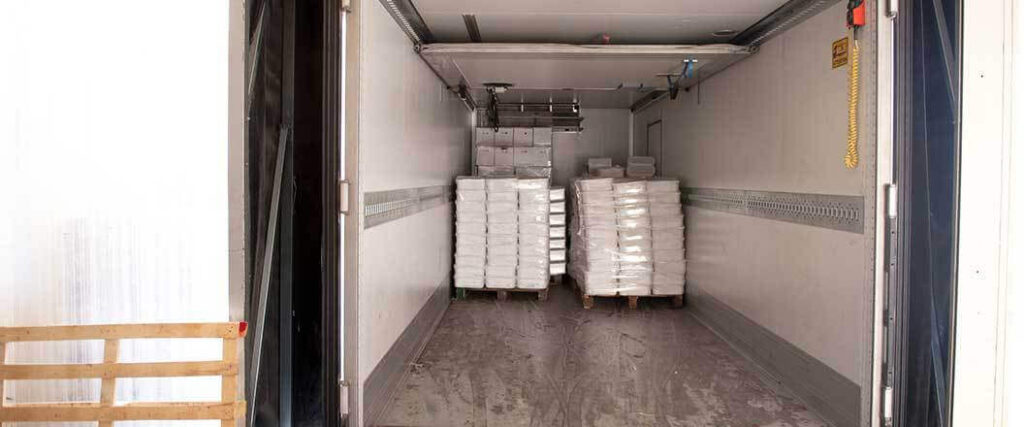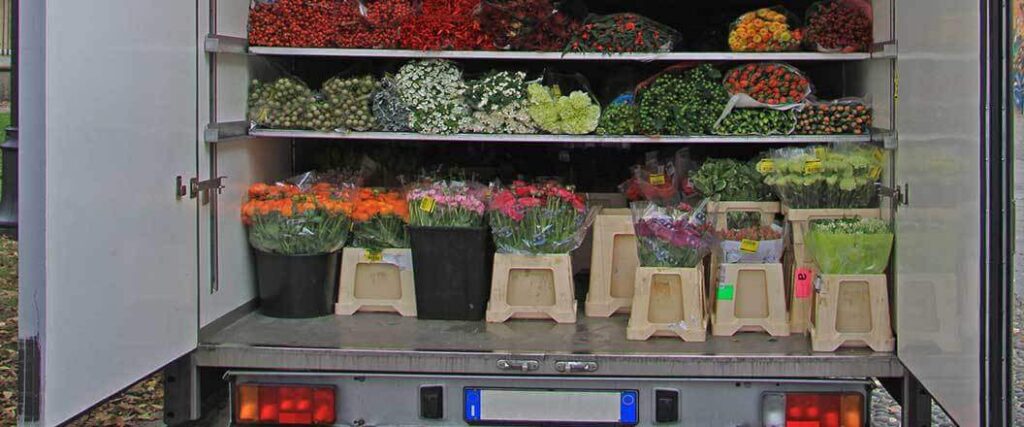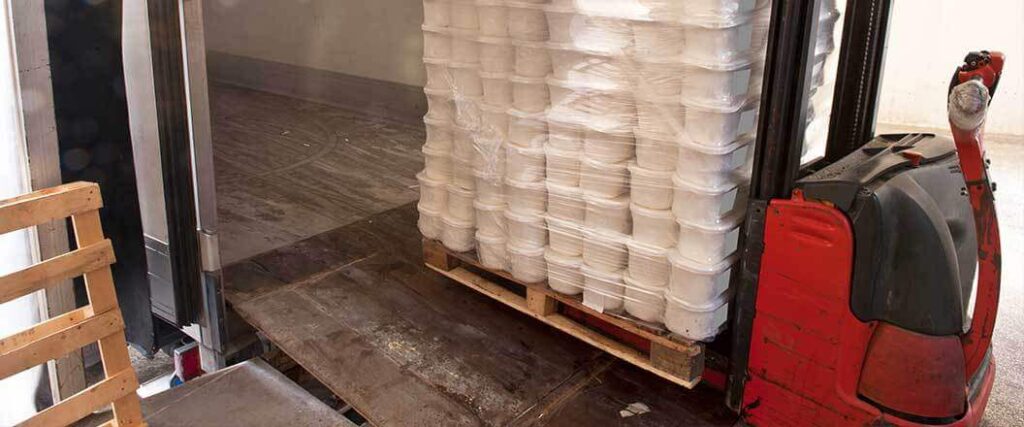Reefer drayage is meant to get your goods out of congested ports and moving along the supply chain. It operates much like any drayage service. Refrigerated cargo, especially when imported, has a set time to get to its destination. There are important points to remember when using drayage services for perishable goods.
Reefer drayage provides short-haul solutions for refrigerated containers in congested ports. Reefer containers may need specialized chassis with a fuel tank to supply power to generator sets (genset) maintaining container cooling systems. For intermodal drayage, a secondary genset can be attached to the chassis for backup.
Find out how you can successfully use refrigerated drayage services for time-sensitive and perishable cargo.

Drayage services have seen an uptick in popularity. As a service, it became a reliable solution for relieving port congestion. Drayage operators are running trucks between ports and local warehouses almost non-stop to keep up with the demand.
Reefer drayage services have been harder to come by because of the specialized chassis required. Logistically speaking, reefer drayage services are very necessary. Dry containers may sit in port or get warehoused for a time with no negative effects. Reefer freight has a much shorter delivery deadline.
Although reefer containers are built with cooling systems, these are not meant to last forever. Before selecting a drayage company, be sure they are capable of delivering your containers in good time.
The most common type of freight transported in reefer containers is food. Fresh fruits and vegetables need to be delivered before going bad, more so when they come from overseas. Maintaining the correct temperature for food requires care because the needed temperature will change as food ripens.
There are other imported goods that need temperature-controlled environments. These may be items such as:

Don’t waste another moment settling for lukewarm Refrigerated Transportation Services. Fill out your free quote to get your perishable goods moving fast!
Certain chemicals may also be considered hazardous materials. The temperature needs of these commodities vary depending on season, quantity, and length of travel time.
When seedlings are shipped during the winter, a reefer container may be set to maintain a higher temperature to prevent freezing.
Port drayage services for these items may also prove to be more flexible. Although they still need refrigerated units, they do not perish as quickly as food commodities. Drayage companies may recommend local warehouses with refrigerated storage abilities if immediate delivery isn’t possible.

Companies offering drayage for reefer containers may need specialized equipment. Some will own it, others may rent it and pass the cost on to you. When transporting goods from overseas, there are a variety of different containers (including reefers), but their sizes are kept standard.
The tare weight of a reefer container will be 1,000 to 1,500 pounds heavier than a standard dry container. Both types do max out at similar gross weights though. While standard chassis can handle the dimensions and weight, operators may prefer to use chassis meant specifically for reefer containers.
The gensets on some reefer containers can run on electrical power, but the majority still use diesel fuel. Sometimes a drayage operator has to hold on to a reefer for longer than usual. If that happens, reefer chassis with fuel tanks are needed for the power supply.
A backup generator set may get added to the chassis in case the one built into the container fails. This is useful for intermodal drayage being transferred to railway carriers. Most may not be able to check on the unit as often. Backup systems can prevent whole trailers from getting ruined.
Drivers picking up reefer drayage may also want to check the temperature manually with an infrared thermometer. Confirming the temperature is an easy precaution and creates a record if something goes wrong.

Reach out to us at (866) 849-4923 or fill out our quick form and a live agent will be in touch shortly.
Refer drayage for food containers requires the operator to stay in compliance with all Food Safety Modernization Act (FSMA) Sanitary Transportation Rules.
These rules state that equipment must be capable of maintaining the necessary temperatures for food preservation. A malfunctioning reefer that isn’t cycling cooled air correctly or causing carbon dioxide to build up is a hazard.
Carriers offering reefer drayage must make sure that drivers and operators are trained in reefer container transport. They need to be familiar with the items being transported and the correct temperature needed for them.

Dry van drayage is less prone to government oversight unless special commodities are being transported. As an importer or business, you will have more options with dry van drayage because you aren’t limited by temperature.
You may find it easier to combine drayage services with cross docking or intermodal solutions to keep goods moving.
Reefer drayage requires operators with specialized training and possibly specialized equipment. The type of reefer container you use may also make a difference. Some reefers use water cooling systems to vent heat and need closer monitoring.
Standard drayage rates are based on weight and packaging type. Most drayage operators expect a driver to be able to complete several runs during a shift.
Reefer drayage rates will be higher than dry van rates. More time is needed to make sure the container is operating correctly so fewer runs are possible. Since reefer containers can’t be moved as quickly, operators raise the price to make up the difference.
Extra charges could include:
The effect different commodities may have on reefer drayage rates is difficult to determine. On the one hand, the driver may never come into contact with the merchandise in the container. In that case, temperature monitoring is the same whether it’s frozen or just cool.
Some merchandise requires specialized types of reefer containers. Aside from standard closed reefer containers, there are:
Seeing as how these differ in value and complexity, rates may be less or more than standard.
USA Refrigerated Freight stands out as the ultimate choice for your reefer drayage and we pride ourselves on offering top-notch services.
Give us a call at (866) 849-4923 to discuss your refrigerated shipping needs and request a risk-free quote. Find out why businesses trust USA Refrigerated Freight for their temperature sensitive shipments.
USA Refrigerated Freight
315 NE 14th Street #4122
Ocala, FL 34470